Typically the Japanese Educational Technique
 |
| Assembly time at a public elementary school |
Several private colleges, but, give you a six year programme incorporating each junior your childhood and your childhood. Specialised colleges could give you a 5 year programme comprising your childhood and 2 numerous years of junior faculty. There may be 2 choices for tertiary education : junior faculty (2 decades) and university (four decades).
A college year has 3 terms : summer, winter and spring, which you ll find are every followed by the vacation amount. The particular college year begins in April and ends in March of listed here year.
An elementary college (from 6 decades) and junior your childhood (3 decades) education, i. e. 9 numerous years of schooling are thought-about compulsory (notice pages on legality of homeschooling).
This method, applied through the College Education Law enacted in March 1947 when WWII, owes the origin in the American design 6-3-3 and 4 numerous years of university. Several some other options in the Japanese educational method, are but, primarily based on European products.
Compulsory education covers elementary college and junior your childhood. A break coming from the past, modernday public colleges in Japan nowadays are mostly co-ed (a lot more than 99% of elementary colleges). The particular Japanese college year begins in April and students attend college for 3 terms except for temporary spring and winter breaks along with a one month very extended summer holiday.
A few Statistics
Japan has 23, 633 elementary colleges, 11, 134 junior large colleges, 5, 450 senior large colleges, 995 colleges for that handicapped, 702 universities, 525 junior colleges, and 14, 174 kindergartens (May 2003 figures). College attendance rate for that 9 numerous years of compulsory education is 99. 98%.
Concerning 20. 7 million students (May 2003 figures) were enrolled in educational establishments in Japan coming from the kindergarten to university levels.
Enrolment in the population of students can be broken up into :
1, 760, 442 in kindergartens ;
7, 226, 911 in elementary colleges ;
3, 748, 319 in junior large colleges ;
3, 809, 801 in senior large colleges ;
250, 065 in junior colleges (typically 2 decades) ;
2, 803, 901 in universities (four decades) and graduate colleges ;
57, 875 in technological colleges ;
786, 135 in special coaching colleges ;
and 189, 570 in other sorts of colleges.
Japanese kids enter major college from age 6. The particular average category size in suburban colleges is amongst 35-40 students, even if the actual national average had dropped to 28. 4 pupils for every category in 1995. 70% of teachers train all topics as specialist teachers are rare in elementary colleges. 23. 6% of elementary college students attend juku (mostly cozy family-run juku).
Suburban colleges will usually be giant along with student populations starting from all all over 700 to more than 1, 000 pupils, though remote rural colleges (19% of colleges) could be single-class colleges.
From age 12, kids begin to middle colleges. At this stage, concerning 5. 7% of students attend private colleges. The most factors why oldsters select these types of colleges are large priority on educational achievement or simply since they like to consider their kids away from the your childhood choice rat-race given that these types of colleges enable their students direct entry into their affiliated large colleges (and many times straight into the affiliated universities).
2005 outcomes of your survey-questionnaire sent to colleges of 6th grade oldsters in 2 Tokyo wards showed :
- Folks who choose a private junior your childhood for the kid will usually be oldsters along with time and economic influence (home-makers or self-employed along with one kid) foundation their choices and pour in high priority on educational achievement. The foremost widespread motive for sending their kids to the private junior your childhood was which they needed their kids to attain the next degree of educational achievement.
- Folks who choose public junior large colleges build their alternative upon the basis of place, incidence of bullying, and personal steering. Among oldsters who selected a public college outside the actual college district, 45% reported that the significantly vital criterion was very little incidence of bullying and truancy, indicating which bullying was a essential consideration. The particular most significant criteria for those oldsters in choice were length to college, environment and regardless of whether very fine buddies too attended the actual college.
- A huge proportion of oldsters (Sixty five. 1%) will usually choose the actual college primarily based on hearsay.
ninety. 8% in the oldsters mail their kids to the juku or cram college, and people whose kids attended cram college four or even more nights per week accounted for Sixty five. 2%.
98% of 15 year-old middle-school graduates press on to large colleges or private specialist establishments. A high-school diploma is really a thought-about the actual minimum for one of the primary jobs in Japanese societies. The speed of students who advance on to senior large colleges was 97. 0% in 2002.
One-fourth of students attend private large colleges, a little amount of which you ll find are elite educational large colleges. More than 97% of high-school students attend day large colleges, concerning three-fourths are enrolled in educational courses. Some other students are enrolled inside the one or any additional in the 93 correspondence large colleges or perhaps the 342 large colleges which guidance correspondence courses.
There may be 710 universities (not counting junior colleges). Virtually three-fourths of university students are enrolled in private universities. The speed of students who went on to universities and junior colleges was 44. 8 Percent.
Special education establishments exist : 70 colleges for that deaf (rougakko) ; 107 for that blind (mougakko) ; 790 for anyone along with disabilities (yougogakko). This variety is taken into account to become inadequate.
The particular National College Curriculum
The particular elementary college curriculum covers Japanese, social studies, mathematics, science, music, arts and handicrafts, homemaking and physical education. At this point, enough time and emphasis is directed at music, excellent arts and physical education. (View sample curriculum right listed below)
Once-a-week ethical education categories were re-introduced straight into the curriculum in 1959, other then these categories beside the actual before emphasis on non-academic topics are section of the " whole individual " education and that is witnessed because the most important endeavor in the elementary college method. Ethical education can be witnessed as a lot of effectively carried on with the college regimen and day by day interactions which press on while in the category cleaning and college lunch activities.
The center curriculum contains Japanese, mathematics, social studies, science, English, music, art, physical education, field trips, clubs and homeroom time. Students currently acquire instruction from specialist topic teachers. The particular rate is quick and instruction is text-book sure as a result of teachers be required to address plenty of floor in planning for high-school entrance examinations.
Superior colleges adopt highly divergent your childhood curricula, the actual articles could have general or highly specialized topics looking on the actual many kinds of large colleges. To read a sample curriculum of your your childhood (Ikoma Superior College), take a look at listed here link.
Superior colleges can be classed into possibly one of the next styles :
- Elite educational large colleges collect the actual creme de la creme in the student population and mail the actual majority of the graduates to high national universities.
- Non-elite educational large colleges ostensibly prepare students for less prestigious universities or junior colleges, other then in reality mail many their students to private specialist colleges (senshuugakko), that train topics including book-keeping, languages and laptop programming. These colleges constitute mainstream large schooling.
- Vocational Superior Faculties which provide courses in commerce, technological topics, agriculture, homescience, nursing and fishery. Around 60% with their graduates enter full-time employment.
- Correspondence Superior Faculties delivers a flexible sort of schooling for 1. 6% of your childhood students typically these who missed out on large schooling for varied factors.
- Evening Superior College that utilized provide categories to poor other then formidable students who worked though aiming to remedy their educational deficiencies. Other then in recent times, these types of colleges will usually be attended by little-motivated parts of the very least 2 percentiles in terms of educational achievement.
Concerning College Existence
College everyday living usually receives negative press on delinquency, bullying (ijime) or behavioral issues or perhaps the spate of horrendous and baffling crime knifings and killings occurring in colleges during the past decade which were once unheard of inside the country. Student everyday living in government departments elementary colleges in general is but acknowledged by most Japanese to become largely enjoyable, except for a few students that may established in while in the transition to junior your childhood.
Rigorous swotting for entrance exams is mentioned to characterise student everyday living in Japanese colleges starting before entry to middle colleges. To secure entry to most large colleges, universities, along with a number of private junior large colleges and elementary colleges, applicants will be required to sit entrance exams and attend interviews.
Consequently, a large degree of competitiveness (and stress) is frequently observed among students (and the mothers) throughout pre-high to your childhood decades. So you can pass entrance exams in the most effective establishments, several students attend private afterschool study sessions (juku or gakken) which consider put when regular categories in college, and/or special private planning establishments for somethat you 2 decades amongst your childhood and university (yobiko).
The particular Hidden Face of Japanese Education
Beyond Academics -- Faculty Culture
Youngsters find out early on (starting in preschool) to keep cooperative human relationships with the peers ; to observe the particular established faculty routines ; and worth punctuality (from their first year in elementary faculty). Classroom management emphasizes student responsibility and stewardship through emphasis on day by day chores for instance cleaning of desks and scrubbing of classroom floors. Students are encouraged to develop powerful loyalties thus to their social teams, e. g. thus to their category, their sports-day groups, their after-school circles, e. g. baseball and soccer groups. Leadership in addition to subordinate roles, in addition to cluster organization skills are learnt through assigned roles for lunchtime (kyushoku touban), category monitor or category chairperson along with other these duties.
In spite of the assigned leadership-subordinate roles, cluster activities tend to be performed within a surprisingly democratic manner. Teachers typically delegate authority and responsibility to students. Small-group (han) activities typically foster caring and nurturing human relationships among students.
The particular teaching culture in Japan differs greatly as a result of colleges inside the west. Teachers are notably involved concerning acquiring the particular holistic kid and regard it as their activity to concentrate on issues for instance personal hygiene, nutrition, sleep at night that aren't ordinarily imagined of in the particular teacher's duties inside the west. Students may also be taught correct manners, learn how to speak politely and learn how to address adults in addition to learn how to relate thus to their peers inside the appropriate manner. They too find out presenting and public speaking skills with the regimen category conferences in addition to several faculty events while in the faculty year.
Noisy and energetic classrooms, the particular absence of teacher supervision along using the effective use of peer supervision are most frequently noted of elementary faculty classrooms. Homework workload isn't overly serious during this period, day by day portions usually comprise kanji (Chinese characters) or kokugo (Japanese language) worksheets and maybe or 2 pages of arithmetic worksheets. Varied after-school hamako or club activities or remedial categories can be held by individual home-room teachers (or colleges) like they view fit.
Middle-school (i. e. junior faculty) instruction of tutorial topics shifts gear into intense, structured, fact-filled learning and routine-based faculty lifestyle. Small-group han are dispensed along with throughout tutorial categories. Hierarchical teacher-peer and senior-to-junior human relationships in addition to highly arranged, disciplined and hierarchical get the job done environments for instance varied established student committees, are observed in middle colleges.
Juku and Exam War culture
Highschool environment shifts the particular student into your lecture-centered and systematic learning method that is alternatively lauded because of its higher levels of achievement in math and science and criticized because of its monotony and lack of creativity throughout a time geared in direction of competitive examinations when an intensive choice method occurs.
From middle-school to highschool decades, students are affected additional through the after-school activities and juku culture. 59. 55% of middle-school students attend juku it is usual that the large-scale cram faculty chains (1993 MOE survey) compared towards the 23. 6% figure for elementary faculty students. To understand more the particular importance of cram colleges, scan Jukus : The particular Hidden Face of Japanese Education
Peer cluster culture
Peer cluster culture or faculty culture is in the peak throughout highschool decades. Entrance examinations play a robust differentiating role in this article. Highschool culture tends to become distinctive and markedly completely different looking on the sort of highschool. At this point, students turn out to be aware in the nature and ranking of higher colleges which influence their long term, and occupation opportunities, and hence in the differentiation or sorting which is going on.
An elaborate hierarchical labyrinth is out there in every faculty district during which higher colleges are ranked, dictated by issue of admission. Totally different higher colleges have markedly completely different missions, preparing their students for completely different destinations. Consequently, completely different higher colleges develop distinctly completely different subcultures.
The particular highschool rankings too correspond strongly towards the relative wealth and privilege in the students. Students along with additional privileged backgrounds (in terms of parental occupations and income) focus on the higher-ranked colleges when these along with less privileged background congregate in lesser ranked colleges.
A key element noted of highschool culture will be the competitive socialization which occurs in direction of university entrance examinations. Considering that highschool establishments play the particular role of selecting young individuals based mostly on the tutorial achievement, identifying a few for leadership positions among others for subordinate positions. The particular competitive nature of university entrance examination exemplifies the particular selective purpose and final sorting role of Japanese higher colleges.
Elite Superior Colleges supply well-prepared one-hour lecture-style text-bound categories. These kinds of colleges have few disciplinary issues and students are spirited and well-rounded or energetic in after-school extra-curricular activities.














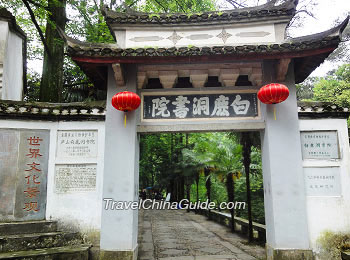
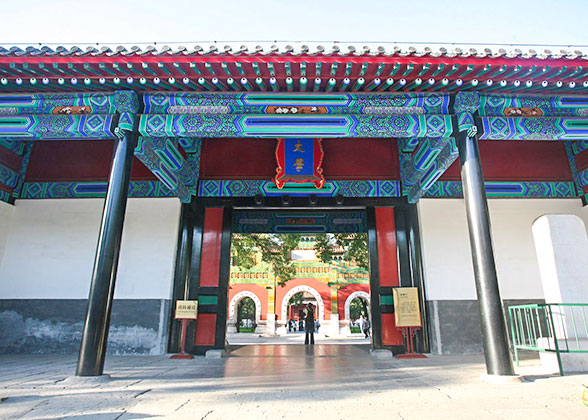
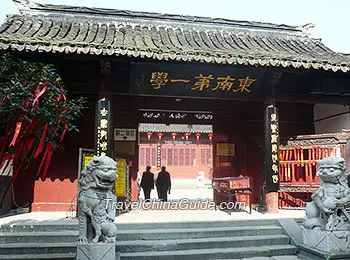
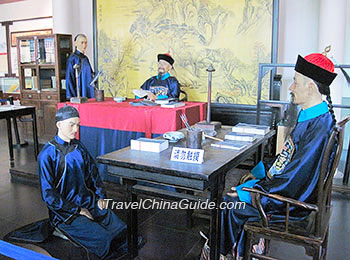
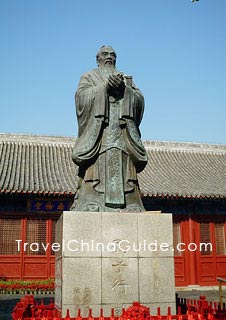

 You certainly will find out how faculty and district portfolios can assist you continuously boost your learning organization by focusing your attempts on utilizing information to answer the listed queries :
You certainly will find out how faculty and district portfolios can assist you continuously boost your learning organization by focusing your attempts on utilizing information to answer the listed queries :

